Tarnowskie Góry
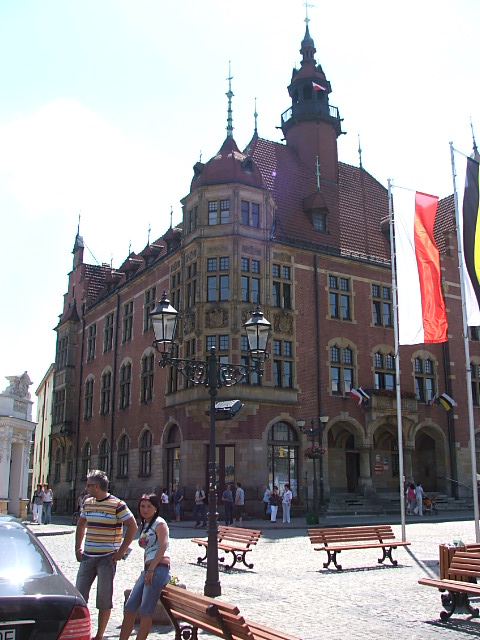
Tarnowskie Góry Town Hall
Distance
Population
60.439 (2010)
Location and history
Tarnowskie Góry is located on the northwestern edge of the large interconnected urban and industrial area, called the Katowice area, in southern Poland. The city is the center city in the district of the same name.
At Tarnowskie Góry, highway 11 (northwest-southeast) crosses highway 78 (southwest-northeast). Highway 11 connects to the southeast with the central parts of the Katowice area and the A4 (E40). The airport at Pyrzowice (Katowice area airport) is approx. 20 km eastbound on highway 78.
By 1348, Silesia had been placed under the Czech crown by Charles IV, king of the Czech Republic. By 1521, most of Upper Silesia had been united under the Principality of Opole by Prince Jan II Dobry (of the Piast genus). In 1526, the Czech Kingdom, together with Upper Silesia (and including Tarnowskie Góry), was placed under Austria by King Ferdinand I.
The city's development is largely due to the rich deposits in the underground of lead, silver, zinc and iron. A legend tells of a farmer who plowed the first silver ore up around 1490. From about 1519 settlers began arriving in the area to dig for silver, and the first mining buildings emerged. On the lands around the village of Tarnowice arose “gory”, which in Old Polish means mines; hence the city name.
The then owner of the area, Jan II Dobry, prince of Opole, as well as the landowner Georg of Brandenburg-Ansbach, gave in 1526 the growing town privileges that supported the development of the mining. Probably the mining town was given market town rights that same year. The aforementioned privileges were issued on April 30, 1526, and applied to all those engaged in mining. Tarnowskie Góry was named a Free Mining City and was thus part of a group of cities such as Olkusz in Poland and Kutna Hora in the Czech Republic, which separated themselves from others by special privileges. In November 1528, the first Silesian Law on Mining was issued, by Prince Jan II Dobry. In 1529, the same Opole prince approved the establishment of a mining administration, including the administration of the city and the judiciary.
In the middle of the 16th century. Tarnowskie Góry was the largest ore mining center in Upper Silesia. In the beginning, it was especially the mining of silver ore that mattered as trade and craftsmanship developed in the city. Tarnowskie Góry used various coins, both Polish, Silesian and Hungarian.
After Prince Jan II’s death without heirs (1532) the area was ruled by princes of the German Hohenzollern genus as sheriffs under the Czech crown. In the years 1552-1645 and from 1666 it was ruled directly by the Habsburgs. Between 1646 and 1666 it was given in pledge to the Polish royal family Waza.
Many supporters of the Reformation sought Tarnowskie Góry, where in 1529 they built a wooden church – and later a foundation-walled church. In the city, several Protestant leaders and writers organized several meetings for their followers.
In the second half of the 16th year. the town square was formed, the houses with the characteristic arcades emerged, and new streets and squares were constructed. Merchants and artisans settled in the city. In 1561, the city was given the right to hold two markets a year, namely in September and April. In 1599, the freedom of craftsmanship was approved. The oldest pools were the cobbler's pool, the tailor's pool, the dressmaker's pool, the bakery's mug and others.
Tarnowskie Góry was never surrounded by a city wall, but the main streets leading out of the city were provided with high gates (gate towers) at the city border, namely the gates lubliniecka, krakowska and wroclawska. As the last, the Wrocław Gate was demolished in 1832.
While the 16th century. meant progress for the city then it was 17th. in several ways a difficult period. During the 30-year war, army forces of different nationalities (Danish, Swedish, Hungarian) passed through the city, causing looting and other unpleasantness for the inhabitants. Thus, in 1627, the city was plundered by Danish army forces and in 1643 by Swedes. During the same period, Tarnowskie Góry was plagued by several fires and epidemics. In 1654 the town numbered 800 inhabitants. In 1701 there was again a great fire in the city. In 1713, the Jesuits opened a Latin school – the first Polish high school.
In 1715, 1723 and 1728, the city is haunted by epidemics during which hundreds of people perish. In 1736 heavy and uninterrupted rain was experienced for 73 days, which completely destroyed the harvest and was the reason why approx. 500 people died of starvation, ie ca. half of the population.
In December 1740, when the Prussian army invaded Silesia, the Silesian wars (between Prussia and Austria) began. After the first of these, the city came from having been under Austrian rule in 1742 under Prussian administration.
In 1750, the former privileges of the city were confirmed by Prussian King Friedrich II.
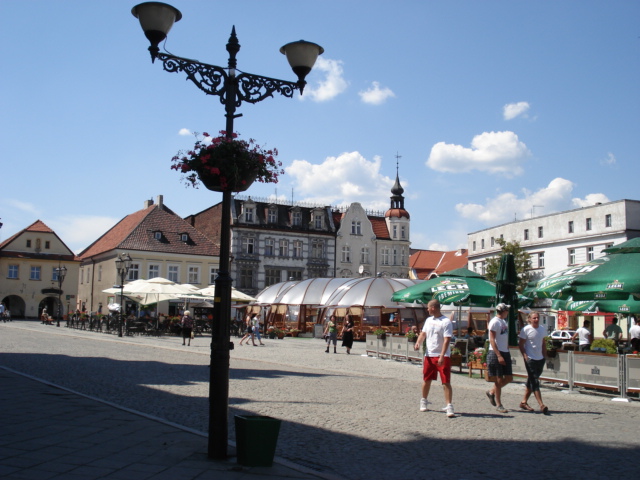
From the square
2nd half of the 18th year. was marked by new progress for mining in the city. The search for additional ore deposits in the area was successfully crowned, and in 1780’the mines arose and the metalwork “Friedrich”. Contributing to the progress was largely the Prussian director of mining, Friedrich von Reden, who in 1787 imported a steam engine from Cardiff. When it was put into operation in 1788, it was the first working steam engine in Europe beyond England. This machine enabled an efficient drying out of the lower levels of the mines, where flooding was a major problem at that time.
In the 19th century. continued development in the city. In 1803 the first mining school was opened.
In 1857 a railway station was built on the Opole-Tarnowskie Góry line. In the years immediately following, rail links to Bytom, Lubliniec and others followed.
During the same period, iron ore was found in the city's underground. New mines were opened and new stools (mines) were built in the existing mines. A printing plant – the city's first – opened in 1840. Several new factories and an ironworks were founded, the ironworks in 1856, a paper mill in 1892. The expansion of the city's water supply was also begun.
In 1903, a city park was built on a former mining ground.
Over time, the deposits of ore depleted, and in the 1920s quarrying ceased. This ended an industrial period that had spanned several centuries. The remains of this establishment were a vast system of underground corridors and chambers that extended throughout the city and out to the surrounding villages.
In 1922, after a referendum, the city came under Polish rule, and the population grew strongly in the following years. In 1927, the City Council decides to conduct a sewerage of the entire city.
On September 2, 1939, the city was occupied by Hitler's forces. Participants in the Silesian uprisings, priests, teachers and officials were arrested and expelled. The occupying power's policy in the area was active Germanization, introduction of German as administrative language, etc. The Jewish synagogue was burnt down, the Jews were oppressed and over time completely displaced or murdered. Towards the end of the war the Germans began to expand their defenses against air strikes. In January 1945, the German mayor and his officials felt compelled to flee west. As of January 23, 1945, the city was again Polish. German inhabitants fled or were expelled. Immediately, the damage caused by the war began.
In the course of time, the mining town became known in much of Europe and was visited by many well-known persons such as King Jan III Sobieski (1683), King August II (1697), King August III (1734), the Swedish King Karl XII, the Russian Tsar. Aleksandr I (1820), the German poet Johann Wolfgang Goethe (1790), the Polish author and politician Józef Wybicki.
The modern Tarnowskie Góry has now lost its original, distinctly industrial character. However, there is of course still industry in the city, but in addition it is an important railway hub and tourism and services are important sources of revenue. The underground tourist route, the museums, history and architecture as well as the modern water park and the opportunities for skiing near the city help to attract visitors.
Tarnowskie Góry has one of the largest railway stations in Europe with a length of several kilometers.
Tourist attractions
The city has several attractions, several of which are associated with the local mining of silver ore and lead ore.
In the Tarnowskie Góry there is an unusual underground tourist route that gives access to visits to the former silver mines.
My hallway “The Black Trout” (Sztolnia “Czarnego Pstrąga”)
It is a 600 meter long section of the longest mine draining mine “Fryderyk” (Ex. “Friedrich”). It has been visited since 1957 due to the efforts of a local historical association. The tourist route runs between the mine shafts “Ewa” and “Sylwester”. During the excursion that takes place in boats, one can admire the beauty of the underground world, the stalactites (drip stones) as well as original parts of the chair passage carved into the dolomite cliff.
silver mine
This is the only tourist route in Poland where the tourist has access to the underground silver mines. Admittedly, only a few of the former mining sites can be visited. The route is at a depth of 40 m and a length of 1700 meters. On part of the route (270 meters) you sail in boats. The latest is that the protected mine is also accessible to people with disabilities. During the walk in the underground you can see exhibits of minerals, tools and other equipment used by the miners. Once you reach the surface again, you can visit the Open Air Museum for Steam Machines.
Sedlaczek’s house (Dom Sedlaczka)
on Rynek no.1 (south side of the square) was built in the 16th century. and was until the 19th century. seat of the Bytom area district board. In 1805 the house was bought by Jan Sedlaczek. He designed a wine room here that still exists. Today on the 1st floor there is a museum for the history, art and mining industry in the city and the surrounding area. In addition, concerts are organized in-house with the participation of well-known artists with local connection.
City Hall (Ratusz)
is located on the south side of the square (Rynek 4). It is listed in 1896-98 in the Northern Neo-Renaissance with elements of Gothic. The roof is crowned by a small tower in wood and the facades are adorned with a number of genealogical weapons etc. carved in sandstone: the genus Henckel von Donnersmarck, the Kingdom of Prussia, the German Empire, the city coat of arms of 1562 and the field tomb of Georg von Hohenzollern. On the front facade is a 1959 sculpture depicting a mining worker from the area.
See the picture at the top of the page.
Cochler’s House (Dom Cochlera)
at the address Rynek 5 (the southeast corner of the square) was built in the 17th century, but rebuilt in the 19th century. The house houses the city's oldest pharmacy “Pod Aniołem” (Under the Angel), founded in 1790 by pharmacies Cochler, who for a long time was mayor of the city. In the pharmacy's rooms, cross vaults are preserved in the ceiling. In the years 1839-1855 there was also a mining school in the building. On the exterior facade is seen a figure of an angel.
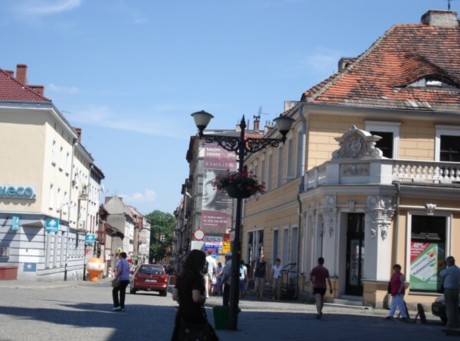
Cochler’s House (on the right side of the picture)
The Evangelical-Augsburg Church
is located on the north side of the square (Rynek 12). It was built by the evangelical congregation in 1780. The building was designed by architect Krzysztof Worbs of Strzelce Opolskie and carpenter Jan Karol Henning of Opole. In 1787 a clock was hung in the church tower, made by watchmaker Franciszek Schmachel from Brynica. In the year 1900 the church was rebuilt in the Neoromanian style. In the church there are empores characteristic of Protestant churches.
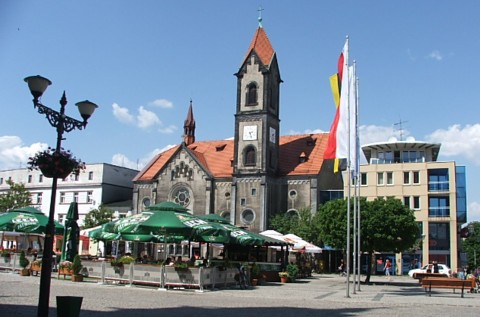
The Evangelical-Augsburg Church in Tarnowskie Góry
My bell frame (Dzwonnica Gwarków)
The clock stack is in its current form from the 19th century. Until 1955 it stood at the Blachówka mine in Bobrowniki Śląskie. Then it was put up at Plac Gwarków. The bell stack is made of wood and stands on a walled rise of limestone. The bell, which is hung in the bell stack, dates from the 16th century.
Wieprzowski’s House
at the address Rynek 3 is built in the 17th century, expanded in the 18th century. and rebuilt in 1890. In the front room the original barrel and cross vault are preserved.
Szymkowic’s House
is located on the square (no.14). At the transition between the 16th and 17th centuries. was the house's owner Mayor Stanisław Szymkowic. In 1608, the house was furnished to seat the city government. In 1908 it was rebuilt and furnished for banking, and the house, which is adorned by a small tower, now houses a section of the savings bank PKO.
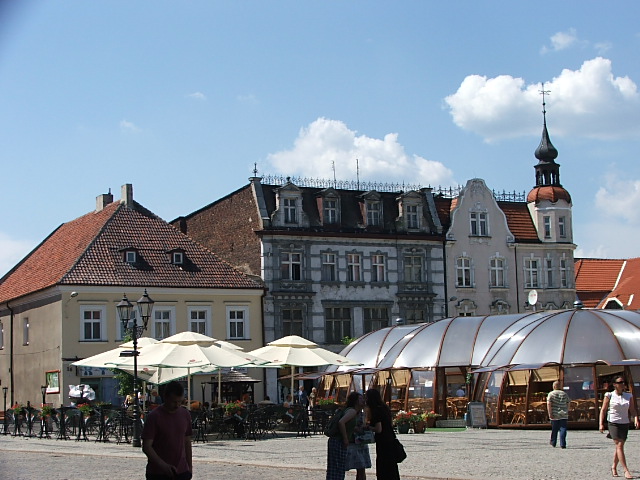
The square in Tarnowskie Góry. Part of the western house row. The corner building on the right with the tower is Szymkowic’s House
Houses with arcades in the western house row
The houses were built in the second half of the 16th century. and belonged to the wealthiest townhouses in the city. Together with houses on a part of ul.Gliwicka (erected at the same time) they form a series of houses with hemispherical arcades and cross and barrel vaults.
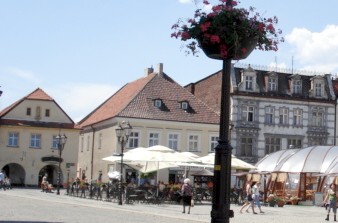
Part of the west side of the square. To the left is one of the houses with arcades
The city's well
The western part of the square was erected in 1950’is a hand-powered hoist under a small roof covered with thatched roofs. The entire construction is made of wood. These are the remains of the former well in the city. The depth of the well is 30 meters. Around the well there is a paving that is reminiscent of the original square’ paving from the 16th century.
House at ul.Gliwicka no.6
The house was built in the early 16th century. and is one of the oldest houses in the city. It was the first seat for the city authorities as well as for the mining office.
The Apostles Peter and Paul's Church
The church was originally erected by the Protestants in 1529. The first wooden church was replaced by a foundation-walled building. In 1545 a choir was offered. In 1560-63 an expansion took place and a tower was added where the bells were hung. In 1586 a clock was installed. In 1629 the church was taken over by the Catholics. Later redevelopments have given the church neo-Romanesque features.
St. Anna's Church
was raised by the Protestants in 1617-19, but in 1629 taken over by the Catholic congregation. Basically remodeled in 1846-47.
Adelgården (Dworek szlachecki)
This is a guest house from the 18th century, where Johann Wolfgang Goethe has stayed (1790). The building now houses a restaurant “Dworek Goethego”. On the first floor, there are offices belonging to the local department of PTTK (Polish Society for Tourism and Property Science).
St. Martin's Church in Stare Tarnowice
The church was built around 1400. In the 16th century. the church was taken over by the Protestants, but during the 30-year war it was given back to the Catholics. The original building was Gothic, but after a redevelopment in the early 18th century, the Baroque style was the most prominent. Inside the church there are beautiful stucco decorations with baroque-style polychromy.
Borgen
On the road leading west to Zbrosławice, in the district of Stare Tarnowice, is an interesting castle complex with a castle dating from the 16th century. The Renaissance castle was erected – at the initiative of Piotr Wrochem – between 1520 and 1570 with three wings, an opening to the north and a tower in the southeast corner. Over the next 300 years, the castle often changed owner. The most recent was Carl Lazarus Henckel von Donnersmarck. During his time a large warehouse, barn and barn were erected in the courtyard. In the 19th century. a fourth wing was added that closed the courtyard to the north. After the Second World War, the castle was nationalized and transformed into a PGR (state agriculture). From May 2000, the castle and 10 hectares of the associated land were taken over by private owners, namely Krystyna and Rajner Smolorz. The new owners began to secure the foundations and broken parts of the buildings. The castle was gradually restored in order for the buildings to have high-level hotel and restaurant functions. Furthermore, it is intended that there should be a Center for Support of Crafts, Culture and Arts – with a local element. The buildings include the restaurant “U Wrochema”.
The castle in Karłuszowiec
Karłuszowiec was previously an independent locality, but is now a district southeast of the city center. The castle is in the neoclassical style and built in the middle of the 18th century. In the southern part of the castle park is a small mansion which now houses the Institute of Pulmonology. On the eastern edge of the park is the district administration's modern administration building.
The castle in Rybna
is located in the district of Rybna approx. 5 km northwest of city center. The castle was built in 1796 by the Warkocz family. During World War II, the castle was owned by the genus Henckel von Donnersmarck. In the 1970s, the castle was rebuilt in accordance with its original appearance. In 1983, the city of Tarnowskie Góry honored the well-restored castle for the Polish Music Artists Society. The castle now runs hotel and restaurant business.
In terms of construction, the castle is built in Late Baroque style with a high mansard roof. However, there are also classicist features, such as the elaborate risalite on the front facade.
The Upper Silesian Narrow Track Railway (Górnośląska Kolejka Wąskotorowa)
is currently the oldest in the world and has been in continuous use since 1851. Initially, horses were used, but from 1855 special steam locomotives began to be used. For about 100 years, the railway was used for communication between mines, metalworks and factories throughout the area. In 2002, the Bytom City Council became the primary owner of the railway, and regular connections were established between Bytom, Tarnowskie Góry and Miasteczko Śląskie. In Tarnowskie Góry there are three stops: the Silver Mine, the city center and the railway station. The wagons are designed to include bicycles.
Park Wodny
is a large and modern water park, located a short distance from the city center. Park Wodny has pools of all types and sizes, fitness rooms etc. Here children and adults can enjoy a time together.
tourist Routes
There are routes for tourists in the following areas:
Route for railway and bicycle enthusiasts.
Route for nature lovers.
Route with visits to lesser-known sacred buildings (churches, monasteries).
Route with visits to old mines.
Route with visits to the fortifications around Tarnowskie Góry.
Surrounding Area
There are numerous tourist attractions in the area, not least mansions and castles. It should be mentioned here:
Świerklaniec (about 6 km east of Tarnowskie Góry)
Pałac Kawalera. – This mansion, designed by Ernest von Ihne, was built between 1903-1906 in French neo-Baroque style as a residence for the genus Donnersmarck. After World War II, the mansion was restored and served as a training center for the mining industry. The house now houses a distinguished hotel with a restaurant. – The inscription shows the inscription: “Memento vivere” (Remember to live).
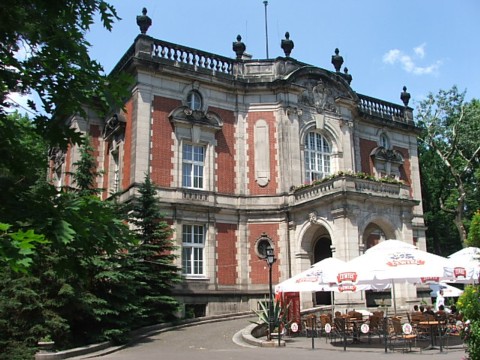
The mansion “Pałac Kawalera” i Świerklaniec.
Nakło Śląskie (4 km east of Tarnowskie Gory)
The castle in Nakło Śląskie. – Construction of the neo-Gothic castle, begun by Hugo von Donnersmarck in 1856, was completed by his son Lazarus IV. After World War II, an agricultural school was set up in the building. Now the castle is owned by the district council of Tarnowskie Góry. Since 2006, the building houses the art gallery “Barwy Śląska”.
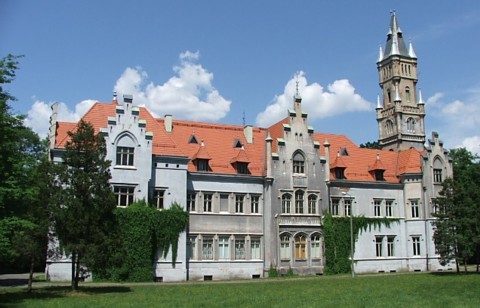
The castle in Nakło Śląskie seen from the south
Brynek (gmina Tworóg) (about 14 km northwest of Tarnowskie Góry)
The castle in Brynek. – In Brynek in the municipality of Tworóg you can see this castle in an eclectic style. Construction was completed in 1829 and the first owner was Bernard von Rosenthal. The castle complex included the residence palace, a botanical garden, a chapel and agricultural buildings. In 1872 an extra wing was added. The main building with mansard roofs is flanked by two distinctive towers with onion dome-shaped helmets.
The building now houses a forestry school.
Tworóg (about 15 km northwest of Tarnowskie Góry)
The castle in Tworóg is a classic building from the 2nd half of the 18th century.
Kamieniec (about 17 km southwest of Tarnowskie Góry)
The castle of Kamieniec is located on an elevation in the terrain on the right side of the river Drama. On the ruins of a former castle, the Kokorz family built in the 16th century. a Renaissance castle. In 1870’The whole castle was rebuilt in the neo-Renaissance style. The castle stands today with the facade facing north and with extensions from the 18th century. as well as from 1872-73. The castle is surrounded by a landscape park.
Szałsza (about 16 km southwest of Tarnowskie Góry)
The castle in Szałsza was built in 1877 by the von Groeling family and erected in neo-Gothic style with partial utilization of the walls of the former building from 1781.
Kopanina (about 10 km northwest of Tarnowskie Góry)
The castle in Kopanina was built by Baron von Fürstenberg in 1889. The style of construction is French neo-baroque. Currently, the building houses an orphanage.
Accommodation
Booking.com
Tarnowskie Góry – with practical information for tourists
Other Internet sites and sources
Tarnowskie Góry
Krawczyk, Jarosław A.: Skarby Powiatu Tarnogórskiego. Przewodnik turystyczny. Tarnowskie Góry, 2006. 128 pp., Ill.
Translated into English by Google Translate. Spangshus.dk accept no liability for any errors or omissions in translation.
Map

Rating
Search
Most used tags
churches (205) Castles (86) Monasteries (79) Town walls (74) Lakes (71) Town halls (67) Rivers (65) Castles1 (62) Mansions (55) Museums (51) Regional museums (38) Town gates (36) Abbey churches (35) Castle ruins (30) Cathedrals (26) Forests (25) Health resorts (24) Mounds (23) Water sports (23) National parks (22)Click for all tags
Denne side er også tilgængelig på dansk. This page and contents is (c) Copyright 2018- www.spangshus.dk. Based on Inviator software by ISCA Software